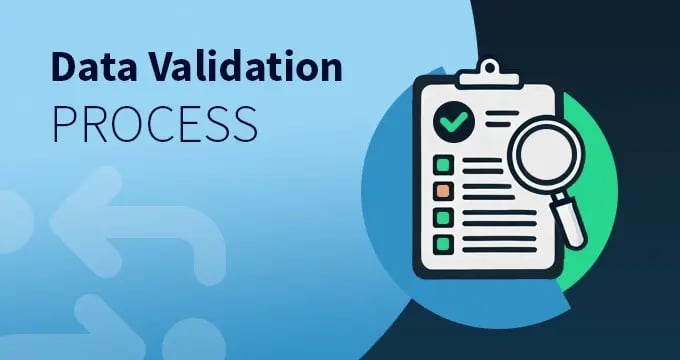The data validation process is a rigorous one that has been developed to make sure that input data is accurate and complete as well as consistent at the time it is going to be used for any particular analysis or operation.
Below is a description of the main stages of the data validation process and the techniques used at each stage.

Step 1: Define Validation Rules
The first part of data validation is to define the validation rules correctly according to the needs of your company. These rules prescribe what is acceptable data for each of the fields.
Step 2: Data Collection
Data is collected from a range of sources through form submissions, databases, and third-party applications. It is important in this stage that the data to be entered into the program is as accurate as possible.
Step 3: Data Cleansing
When data is being collected, it will always have mistakes or contrasting information on it. Data cleaning can be regarded as a step where some of these problems are fixed to make data ready for validation.
Some of these processes are deduplication, which clears records that contain similar data, and standardization, which clears entries that contain similar data in different formats (e.g., New York and NY).
Step 4: Validation Checks
Once data has been cleansed they are validated against the set of rules and assertions. This step is to determine all the data that violate the criterion mentioned above.
Step 5: Error Handling and Reporting
Further, when conducting the validation checks it is advisable to offer an error-handling process as well as feedback to the users or the data entry personnel.
Step 6: Data Storage and Integration
According to this definition, validated data must be stored in secure locations and should be ready for use in analytical and operational systems.
Step 7: Monitoring and Evaluation
Overall, data validation is a periodic process although periodic evaluation of the results is necessary for improvement. It is also common practice that periodic critiques be done concerning validation rules and the procedures in adaptation to data demands.
Conclusion
The data validation process (which is part of data validation service) is critical in getting quality data that organizations need to work on. By implementing data validation methods, rules, collecting and cleansing data, validation checks, error management, and data quality checks, companies can guarantee that they are working on quality data for decision-making. All of this commitment to data integrity increases organizational effectiveness and generates confidence among the stakeholders.





Comments